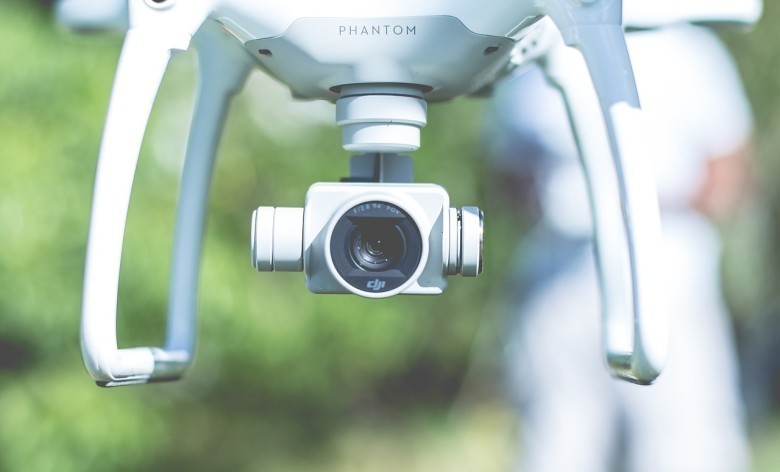
Emerging Technologies Shaping 2024
The year 2024 has ushered in an era where technology continues to evolve at an unprecedented pace, introducing new gadgets that promise to enhance our daily lives. As tech enthusiasts look to stay ahead of the curve, understanding the latest tech trends is crucial. These trends not only influence the gadgets we use but also the way we interact with the world around us.
The Rise of AI and Machine Learning
Artificial Intelligence (AI) and Machine Learning (ML) are at the forefront of technological advancements in These technologies are becoming more sophisticated, with AI algorithms now capable of performing complex tasks that were once thought to be exclusively within the human domain. From personalized recommendations to autonomous vehicles, AI and ML are integral in the development of smart gadgets that learn and adapt to user preferences.
Pervasive 5G Connectivity
The rollout of 5G networks is transforming the landscape of internet connectivity. With its high-speed and low-latency characteristics, 5G is enabling a new wave of gadgets that can communicate and share data faster than ever before. This connectivity is not just limited to smartphones but extends to smart home devices, wearables, and even IoT (Internet of Things) sensors, facilitating a more connected and efficient ecosystem.
The Internet of Things (IoT) Expansion
IoT continues to expand its reach in 2024, with an increasing number of devices becoming internet-enabled. This trend is leading to the creation of smart environments where gadgets can communicate with each other to provide seamless user experiences. From smart kitchen appliances to health-monitoring wearables, IoT is making gadgets more intuitive and responsive to our needs.
Augmented Reality (AR) and Virtual Reality (VR)
AR and VR technologies are blurring the lines between the digital and physical worlds. In 2024, these technologies are not just for gaming; they are being integrated into practical gadgets for education, training, and even remote work. AR glasses and VR headsets are becoming more accessible, offering immersive experiences that enhance the way we learn, work, and play.
Sustainable and Eco-Friendly Tech
Sustainability is a growing concern, and in 2024, eco-friendly tech is becoming a priority for consumers and manufacturers alike. Gadgets that are designed with sustainability in mind, using recycled materials and energy-efficient technologies, are gaining popularity. This trend is not only beneficial for the environment but also resonates with consumers who are increasingly conscious of their ecological footprint.
Quantum Computing Breakthroughs
Although still in its infancy, quantum computing is making significant strides in This revolutionary technology promises to solve complex problems much faster than traditional computers. While quantum computers are not yet mainstream gadgets, the advancements in this field are paving the way for a future where they could become essential tools for research and development.
Health Tech Innovations
Health technology has seen a surge in innovation, particularly in the wake of global health challenges. In 2024, gadgets that monitor health metrics, assist with medical diagnoses, and even provide telemedicine services are becoming more sophisticated. Wearables that track fitness and well-being are now equipped with advanced sensors that offer deeper insights into our health.
Smart Home Evolution
Smart home technology is evolving to offer more than just convenience. In 2023, smart gadgets are increasingly focused on security, energy efficiency, and personalization. Voice assistants are becoming more intelligent, and home automation systems are more integrated, allowing for a home environment that is secure, energy-conscious, and tailored to individual preferences.
Edge Computing Proliferation
Edge computing is gaining momentum as it brings data processing closer to the source of data generation. This trend is crucial for gadgets that require real-time processing capabilities, such as autonomous vehicles and industrial robots. By reducing reliance on cloud-based services, edge computing enables faster and more reliable gadget performance.
Cybersecurity Enhancements
As gadgets become more connected, the importance of cybersecurity cannot be overstated. In 2024, tech enthusiasts will witness an increase in gadgets that come with built-in security features, such as biometric authentication and end-to-end encryption. These enhancements are essential in protecting our data and privacy in an increasingly digital world.
Smartphones: The Ultimate On-the-Go DeviceCutting-Edge Processing Power
In 2024, smartphones are more than just communication devices; they are powerful computers that fit in the palm of your hand. With the latest multi-core processors and advanced chipsets, these devices can handle demanding applications, high-resolution gaming, and multitasking with ease. Tech enthusiasts will appreciate the speed and efficiency offered by the newest Snapdragon and Apple A-series chips, which deliver smooth performance and enhanced AI capabilities.
Revolutionary Camera Systems
Smartphone photography has reached new heights with the integration of sophisticated camera systems. High-resolution sensors, periscope zoom lenses, and advanced computational photography algorithms enable users to capture professional-grade images and videos. Features like night mode, astrophotography, and portrait lighting effects push the boundaries of mobile photography, making smartphones indispensable tools for both amateur and professional photographers.
Immersive Display Technologies
The displays on modern smartphones are a window to a world of vibrant colors and crisp visuals. With the advent of OLED and AMOLED screens, users enjoy true blacks and an infinite contrast ratio, enhancing the viewing experience. High refresh rates, up to 120Hz or even 144Hz, make scrolling and gaming exceptionally smooth. HDR10+ support ensures that movies and TV shows are viewed with the intended color accuracy and dynamic range.
5G Connectivity and Beyond
As 5G networks expand globally, smartphones are at the forefront of this high-speed revolution. The latest devices support 5G connectivity, offering faster download and upload speeds, lower latency, and improved network reliability. This enables seamless streaming of high-definition content, real-time gaming, and instantaneous cloud access, keeping tech enthusiasts always connected and at the cutting edge of technology.
AI and Machine Learning Integration
Smartphones in 2024 are increasingly intelligent, thanks to the integration of AI and machine learning. These technologies power features like voice assistants, real-time language translation, and smart photography enhancements. AI-driven health tracking and personalized recommendations are becoming standard, providing users with a more tailored and intuitive experience.
Robust Security Features
Security is a top priority for tech enthusiasts, and smartphones have evolved to offer robust protection for personal data. Biometric authentication methods, such as fingerprint scanners and facial recognition, provide convenient and secure access to devices. Encrypted storage, secure enclaves for sensitive data, and regular software updates ensure that smartphones are safeguarded against the latest threats.
Eco-Friendly and Sustainable Options
The tech industry is increasingly focusing on sustainability, and smartphones are part of this green movement. Manufacturers are adopting eco-friendly materials, reducing packaging waste, and offering better battery longevity. Some brands even provide modular designs that allow for easy repairs and upgrades, extending the lifespan of the device and reducing electronic waste.
Integration with Smart Ecosystems
Smartphones serve as the central hub for connected smart ecosystems, seamlessly integrating with a range of devices such as smartwatches, home automation systems, and IoT devices. This connectivity enables users to control their environment, track their fitness, and manage their digital lives from anywhere, all through their smartphone.
Innovative Software Features
The software experience on smartphones is constantly evolving, with new features that enhance productivity, entertainment, and social connectivity. Customizable widgets, split-screen multitasking, and advanced gesture controls are just a few examples of how software innovation makes smartphones more versatile and user-friendly for tech enthusiasts.
Accessibility for All Users
Inclusivity is a key aspect of modern smartphone design, with features that ensure accessibility for users with disabilities. Voice control, screen readers, and adjustable display settings are standard, allowing everyone to enjoy the benefits of these advanced devices. Tech enthusiasts who value universal design will find that the latest smartphones cater to a wide range of needs and preferences.
Wearable Technology: Smartwatches and Fitness TrackersThe Evolution of Wearables in 2024
The landscape of wearable technology has seen significant advancements in Smartwatches and fitness trackers have evolved from mere pedometers and notification mirrors of smartphones to standalone devices packed with cutting-edge features. They now offer a blend of health monitoring, lifestyle management, and even augmented reality experiences, making them indispensable for tech enthusiasts.
Cutting-Edge Health Monitoring Features
Modern smartwatches and fitness trackers have taken health monitoring to new heights. They come equipped with sensors capable of tracking a wide array of biometrics. Heart rate monitoring has become more precise, with some devices offering ECG and blood pressure measurements. Oxygen saturation (SpO2) tracking is now standard, and some models can even monitor glucose levels non-invasively. Sleep tracking has also improved, providing insights into sleep stages and quality.
Stress and Recovery Analysis
These gadgets have begun to focus on mental well-being, offering stress detection through heart rate variability (HRV) and providing guided breathing exercises. Recovery analysis is another feature that has gained prominence, advising users on when to take a break and how to optimize their workout routines for better performance and health.
Enhanced Connectivity and Smart Features
Smartwatches have become more autonomous, with built-in LTE connectivity allowing for phone-free calls, texts, and data access. Integration with virtual assistants like Siri, Google Assistant, and Bixby has improved, enabling voice-activated commands and seamless interaction with smart home devices.
Contactless Payments and Security
The convenience of contactless payments is now a standard feature, with most devices supporting services like Apple Pay, Google Wallet, and Samsung Pay. Security features have also been enhanced, with some wearables offering two-factor authentication and emergency SOS alerts.
Customization and Personalization
The ability to customize watch faces and straps allows users to personalize their devices to match their style and preferences. Advanced interfaces let users create or download unique watch faces, and the market for interchangeable straps has grown, offering a variety of materials and designs.
Adaptive Interfaces
Wearable interfaces have become more adaptive, changing their layout and functionality based on the user's activity or the time of day. This dynamic approach ensures that the most relevant information is always at the user's fingertips.
Fitness Tracking: Beyond Steps and Calories
Fitness trackers now offer a more comprehensive view of users' physical activity. They can recognize and track various types of workouts, from swimming to weightlifting, and provide detailed analytics on performance and progress.
Advanced Workout Modes and Coaching
Many devices come with advanced workout modes that cater to specific sports and activities, offering tailored metrics and coaching. Virtual coaching has become more interactive, with real-time feedback and adaptive training plans that evolve with the user's fitness level.
The Rise of Specialized Wearables
While general-purpose smartwatches dominate the market, there has been a rise in specialized wearables designed for specific user groups. Devices tailored for runners, swimmers, or cyclists offer in-depth data and features that cater specifically to those activities.
Niche Market Innovations
Innovations in niche markets have led to wearables that focus on particular health conditions or lifestyle needs, such as devices for monitoring chronic conditions or improving posture. These specialized gadgets often integrate with broader health ecosystems, providing valuable data to healthcare providers and users alike.
Integration with Other Tech Ecosystems
Wearable devices are increasingly becoming part of larger tech ecosystems. They integrate seamlessly with smartphones, laptops, and even smart home devices, creating a unified experience that extends the functionality of wearables beyond their small screens.
Cross-Device Synchronization
Cross-device synchronization ensures that data collected by wearables is available across all of a user's devices, enabling a cohesive view of health metrics, notifications, and other relevant information. This integration also allows for more complex health and fitness analysis when combined with other data sources.
Home Automation: Smart Home Devices and AssistantsThe Rise of Smart Home Ecosystems
In the realm of home automation, tech enthusiasts are witnessing an unprecedented integration of devices and services. Major tech companies are expanding their ecosystems, ensuring that their smart home devices work seamlessly together. Users can now control lighting, heating, security, and entertainment through a single interface, often with voice commands or through a smartphone app.
Voice-Controlled Smart Assistants
Voice-controlled smart assistants have become the cornerstone of home automation. Devices like the Amazon Echo with Alexa, Google Nest Hub with Google Assistant, and Apple HomePod with Siri are more than just speakers; they act as command centers for the smart home. These assistants can control compatible devices, answer questions, set reminders, and even make purchases or reservations online.
Enhanced Privacy and Security Features
As smart assistants become ubiquitous, there is a growing emphasis on privacy and security. The latest models come equipped with features like voice recognition, end-to-end encryption, and the ability to delete voice recordings. These enhancements address consumer concerns and make the use of smart assistants more secure and personalized.
Smart Lighting Solutions
Smart lighting systems, such as Philips Hue and LIFX, offer users the ability to adjust color temperature and brightness, set schedules, and create ambiance with just a few taps on their smartphone or voice commands. These systems can also integrate with other smart home devices for automated routines, like dimming lights when a smart TV is turned on.
Energy Efficiency and Customization
Smart lighting isn't just about convenience; it's also about energy efficiency. LED bulbs are long-lasting and consume less power. With smart lighting, users can monitor their energy usage and automate lights to turn off when no one is in the room, contributing to a greener home.
Advanced Smart Home Security
Smart home security has evolved to include wireless cameras, smart locks, and alarm systems that can be monitored and controlled remotely. Brands like Ring and Arlo offer devices that provide real-time alerts and video feeds to smartphones, allowing homeowners to keep an eye on their property from anywhere.
Integration with Emergency Services
Some smart security systems now offer integration with local emergency services, automatically contacting authorities in case of a break-in or fire. This direct link ensures faster response times and adds an extra layer of safety to home security.
Smart Thermostats and Climate Control
Smart thermostats, such as the Google Nest Thermostat and Ecobee, have revolutionized climate control in homes. These devices learn user preferences and adjust the temperature automatically for optimal comfort and efficiency. They can also provide energy usage reports and suggestions for reducing costs.
Geofencing and Remote Access
With geofencing technology, smart thermostats can detect when residents are away from home and adjust settings to save energy. Remote access allows users to control their home's temperature from their smartphones, ensuring they return to a comfortable environment.
Home Automation Hubs and Controllers
While individual smart devices offer convenience, a centralized home automation hub can streamline the smart home experience. Samsung SmartThings, for example, connects a wide range of devices from different brands, allowing users to manage their entire home from a single app.
Compatibility and Interoperability
The challenge for home automation hubs is compatibility. The best hubs in 2024 support a wide range of communication protocols like Zigbee, Z-Wave, and Wi-Fi, ensuring they can work with as many devices as possible. Interoperability between different brands and ecosystems is key to a cohesive smart home experience.
Smart Appliances and IoT Integration
The Internet of Things (IoT) continues to expand, with smart appliances like refrigerators, ovens, and washing machines becoming more common. These appliances can suggest recipes based on their contents, order groceries, or notify users when a laundry cycle is complete.
Predictive Maintenance and Efficiency
Smart appliances are not only convenient but also capable of predictive maintenance. They can alert users to potential issues before they become major problems, saving time and money on repairs. Additionally, they often feature eco-friendly modes that optimize energy and water usage for sustainability.
The Future of Home Automation
As we look to the future, home automation is set to become even more intuitive and integrated. With advancements in AI and machine learning, smart home devices will better anticipate user needs and automate more aspects of home management, making the smart home experience more seamless and personalized than ever before.
Audio Gadgets: Wireless Earbuds and Noise-Cancelling HeadphonesThe Rise of Wireless Earbuds
In recent years, wireless earbuds have become a staple for tech enthusiasts, offering a blend of convenience, portability, and high-quality audio. The absence of cords provides a freedom of movement that is particularly appealing to those who lead active lifestyles or prefer a minimalist approach to their tech.
Key Features to Consider
When selecting wireless earbuds, consumers should consider battery life, sound quality, comfort, and connectivity. Many models now offer extended playtime with additional charges available through their carrying case. Sound quality has also seen significant improvements with the integration of advanced audio codecs and drivers. Comfort is subjective, but many brands offer various ear tip sizes to ensure a secure fit. Lastly, seamless connectivity, often through Bluetooth 5.0 or higher, ensures a stable connection to devices.
Leading Models in 2024
Some of the leading models in 2024 include the latest iterations from established brands such as Apple's AirPods Pro, Samsung's Galaxy Buds, and Sony's WF-1000 series. These models often feature proprietary technology like active noise cancellation, spatial audio, and voice assistant integration, setting them apart in a crowded market.
The Evolution of Noise-Cancelling Headphones
Noise-cancelling headphones have evolved to become an essential gadget for those looking to immerse themselves in audio content without external distractions. They use active noise control to reduce unwanted ambient sounds, making them ideal for travel, work, or any environment where noise pollution is an issue.
Active vs. Passive Noise Cancellation
Active noise cancellation (ANC) relies on microphones and electronic circuitry to counteract external noise, while passive noise cancellation is achieved through the physical design of the headphones to block out sound. The best noise-cancelling headphones combine both methods to maximize the user's listening experience.
What to Look for in Noise-Cancelling Headphones
When shopping for noise-cancelling headphones, it's important to consider the effectiveness of the ANC, the overall sound quality, comfort for extended wear, and battery life. Additional features such as touch controls, built-in microphones for calls, and smart features like auto-pause and ambient sound modes can also enhance the user experience.
Top Picks for 2024
Among the top picks for 2023 are models from Bose, Sony, and Sennheiser, which continue to push the boundaries of ANC technology. The Bose 700 series, Sony WH-1000XM series, and Sennheiser Momentum series are frequently praised for their superior noise cancellation, audio fidelity, and comfort.
The Importance of Personalization
Personalization has become a key trend in audio gadgets, with many devices now offering customizable sound profiles. Users can adjust equalizer settings to their preferences, and some products even offer hearing tests to tailor the sound to the user's unique hearing profile.
Customizable Controls
Many wireless earbuds and noise-cancelling headphones now allow users to customize control schemes, whether it's through touch gestures or physical buttons. This customization ensures that users can access their most-used features quickly and efficiently.
Integration with Smart Devices
The integration with smartphones, smartwatches, and voice assistants has become more seamless, allowing users to control their audio experience without ever needing to reach for their device. This integration is not only convenient but also enhances the overall utility of the audio gadgets.
The Future of Audio Gadgets
As we look to the future, advancements in audio technology continue to emerge. Innovations such as bone conduction technology, 3D audio, and AI-driven sound optimization are expected to further revolutionize the way we experience audio through our gadgets. These advancements promise to deliver even more immersive and personalized audio experiences for tech enthusiasts in the years to come.
Portable Power: Solar Chargers and Power BanksThe Rise of Portable Power Solutions
In an era where technology is integral to our daily lives, staying powered up is more important than ever. Tech enthusiasts are turning to portable power solutions to keep their devices running during long trips, power outages, or simply when they're away from traditional power sources. Solar chargers and power banks have become essential gadgets for anyone who wants to ensure their devices never run out of juice.
Solar Chargers: Harnessing the Power of the Sun
Solar chargers are innovative devices that convert sunlight into electricity, providing an eco-friendly way to charge your gadgets. They come in various sizes and capacities, tailored to different needs.
Key Features to Consider
- Efficiency: The best solar chargers have high conversion rates, meaning they can charge devices faster.
- Portability: Look for lightweight and foldable designs that are easy to pack and carry.
- Durability: Weather-resistant and rugged designs are crucial for outdoor use.
- Compatibility: Ensure the solar charger has the right ports and power output for your devices.
- Model X: Known for its high-efficiency solar panels and durable design, perfect for outdoor enthusiasts.
- Model Y: Offers a compact and ultra-portable solution with integrated battery storage.
- Model Z: Features multiple ports and a built-in stand for optimal sun exposure, ideal for camping trips.
Power banks are portable batteries designed to charge your devices multiple times over. They are the go-to solution for tech enthusiasts who need reliable power without access to a power outlet.
Capacity and Speed
- High Capacity: Power banks with large battery sizes can charge multiple devices or offer several charges for one device.
- Fast Charging: Look for power banks with Quick Charge or USB-C Power Delivery for rapid charging capabilities.
- Wireless Charging: Some power banks now offer wireless charging, adding convenience by eliminating the need for cables.
- Smart Features: Advanced models include features like LED displays for battery status, built-in cables, and even connectivity to track the power bank's location.
- PowerCore A: Boasts a massive battery capacity and multiple ports, suitable for charging laptops and smartphones alike.
- ChargePack B: Features a slim design with fast charging and built-in cables for hassle-free use.
- EnergyCell C: A compact and lightweight option with impressive charging speed, perfect for daily carry.
For the ultimate portable power solution, tech enthusiasts can combine a solar charger with a power bank. This setup allows for the power bank to be charged via solar energy, providing an endless source of power while on the move.
Integration for Seamless Power
- Solar-Ready Power Banks: Some power banks are designed to pair with specific solar chargers, ensuring efficient charging and optimal compatibility.
- Hybrid Models: There are hybrid devices that incorporate both a solar panel and a built-in power bank, offering convenience and reducing the need to carry multiple gadgets.
By leveraging the strengths of both solar chargers and power banks, tech enthusiasts can enjoy uninterrupted power for all their devices, no matter where their adventures take them.
Gaming Gadgets: Next-Generation Consoles and VR HeadsetsNext-Generation ConsolesPlayStation 5 and Xbox Series X|S Enhancements
The PlayStation 5 and Xbox Series X|S, while initially released in late 2020, continue to evolve with firmware updates and new hardware iterations. These consoles offer high-fidelity graphics, rapid SSD loading times, and advanced features like ray tracing. Sony and Microsoft are constantly enhancing the user experience with system updates that improve performance and introduce new features.
Nintendo's Latest Offerings
Nintendo, known for its innovative approach to gaming, may surprise tech enthusiasts with a new iteration of the Switch or an entirely new console. The focus is likely to be on portability, unique gameplay experiences, and integration with a growing library of games.
Emerging Console Brands
New players in the console market, such as the rumored Google console, could disrupt the traditional landscape. These devices might leverage cloud gaming technology to offer a library of games without the need for powerful local hardware.
VR HeadsetsOculus Quest 3
The Oculus Quest 2 has been a game-changer in wireless VR experiences. Its successor, the Oculus Quest 3, is anticipated to push the boundaries further with improved resolution, a more comfortable design, and even more immersive gameplay experiences. It is expected to continue the trend of standalone operation without the need for an external PC.
PlayStation VR2
With the PlayStation 5's capabilities, the upcoming PlayStation VR2 headset is poised to take console VR to new heights. Enhanced tracking, higher resolution displays, and a wider field of view are among the features that could define this next-gen console VR experience.
Valve's VR Innovations
Valve, after the success of the Index, may introduce a new VR headset with advanced features like wider field of view, higher refresh rates, and improved hand-tracking capabilities. Valve's commitment to pushing the envelope in VR could result in a headset that appeals to both gamers and developers.
Mixed Reality Headsets
Mixed reality (MR) headsets that blend the physical and digital worlds are becoming more prevalent. These headsets, such as the Microsoft HoloLens and the Magic Leap, offer unique gaming experiences that overlay digital content onto the real world, providing a different dimension to gaming.
Advances in VR Accessories
To enhance the VR experience, new accessories are being developed. These include haptic feedback suits, advanced motion controllers, and treadmill-like devices for more natural in-game movement. These accessories aim to make VR gaming more immersive and intuitive.
Innovative Computing: Laptops, Tablets, and E-readersLaptops: Power Meets Portability
The landscape of laptops in 2024 is dominated by ultra-portable yet powerful machines. The latest models feature advancements such as OLED touchscreens, offering vibrant colors and deep blacks, and bezels have shrunk to provide a more immersive viewing experience. Processors have become more energy-efficient, with new ARM-based chips rivaling traditional x86 architectures for performance while offering better battery life.
High-Performance Laptops
For tech enthusiasts who demand the highest performance, the latest gaming laptops are equipped with mobile versions of desktop-grade GPUs, providing unprecedented graphics capabilities on the go. These laptops also boast high-refresh-rate displays, essential for competitive gaming and smooth visuals.
Ultrabooks and Convertibles
Ultrabooks continue to push the boundaries of thinness and lightness without compromising on performance. Convertible laptops, with their 360-degree hinges, offer the versatility of a tablet with the productivity of a traditional laptop. These devices often come with stylus support, making them ideal for creatives and professionals alike.
Sustainable and Modular Designs
A growing trend in laptop design is sustainability. Manufacturers are increasingly using recycled materials and making devices easier to repair and upgrade. Modular laptops are gaining traction, allowing users to replace components such as RAM, storage, and even the motherboard, extending the device's lifespan and reducing electronic waste.
Tablets: The Convergence of Mobility and Functionality
Tablets in 2024 have further blurred the lines between mobile devices and computers. With powerful processors, they can handle tasks that were once the domain of desktops. Operating systems have also evolved, with better multitasking features and support for desktop-class applications.
High-End Tablets
The high-end tablet market is characterized by devices with large, high-resolution displays and refresh rates that make scrolling and drawing feel incredibly smooth. These tablets are often paired with accessories like detachable keyboards and advanced styluses, transforming them into viable laptop replacements for many users.
Budget-Friendly and Mid-Range Tablets
The mid-range and budget tablet segments offer great value, with many models providing good performance for everyday tasks like browsing, media consumption, and casual gaming. These tablets have also seen improvements in build quality and display technology, making them attractive options for those who don't require top-tier specs.
E-readers: The Evolution of Digital Reading
E-readers remain a favorite among book lovers for their convenience and eye-friendly displays. The latest e-readers come with higher resolution screens that mimic the look of actual paper even more closely. Front-lit displays with adjustable color temperature allow for comfortable reading in any lighting condition.
Waterproof and Audio-enabled E-readers
Modern e-readers are not just for reading anymore; they're also waterproof and often come with Bluetooth connectivity, enabling users to listen to audiobooks. This versatility makes them perfect companions for the beach, poolside, or during a commute.
Smart Features and Connectivity
E-readers in 2024 are smarter, with features like integrated dictionaries, translation options, and the ability to sync reading positions across devices. Wi-Fi and cellular connectivity options mean that users can download books and access cloud services anytime, anywhere.
Integrating New Gadgets into Daily LifeEmbracing the Tech Lifestyle
The integration of new gadgets into daily life begins with a mindset that embraces constant innovation and improvement. Tech enthusiasts often lead the charge in adopting new technologies, finding ways to incorporate them into their routines to enhance productivity, entertainment, and overall quality of life. The key is to approach these gadgets as tools that solve existing problems or open up new possibilities, rather than as mere novelties.
Personalization and Customization
Each individual has unique needs and preferences, which is why personalization is crucial when integrating new gadgets. Customizing settings, choosing the right accessories, and tailoring the user experience ensures that these devices serve their intended purpose effectively. Whether it's setting up smart home devices to recognize individual voices or programming a fitness tracker to monitor specific health metrics, personalization enhances the utility of new gadgets.
Seamless Integration with Existing Ecosystems
For a smooth transition, new gadgets should ideally integrate with the existing technological ecosystem. This includes compatibility with current smartphones, computers, and smart home systems. Ensuring that new devices can communicate and work together with older ones minimizes friction and creates a more cohesive user experience.
Learning and Adaptation
Adopting new gadgets often requires a learning curve. Users should be willing to invest time in understanding how these devices work and how to get the most out of them. This might involve reading manuals, watching tutorials, or even attending workshops. As users become more proficient, they can unlock the full potential of their gadgets, making them indispensable parts of their daily lives.
Security and Privacy Considerations
With the increasing number of connected devices, security and privacy become paramount. Users must be proactive in securing their gadgets by setting strong passwords, enabling two-factor authentication, and keeping software up to date. Understanding privacy settings and being aware of the data that gadgets collect and share is also essential to protect personal information.
Balancing Technology with Lifestyle
While integrating new gadgets, it's important to maintain a balance between technology and lifestyle. Devices should augment reality, not replace it. Users should be mindful of the time spent with technology and ensure that it does not detract from personal interactions or physical activities. Finding this balance is key to making the most of technology without letting it dominate one's life.
Community Engagement and Support
Finally, tech enthusiasts often benefit from engaging with a community of like-minded individuals. Online forums, social media groups, and local meetups can provide support, advice, and a platform to share experiences. This community engagement can be invaluable for troubleshooting issues, discovering new uses for gadgets, and staying informed about the latest tech trends.
































